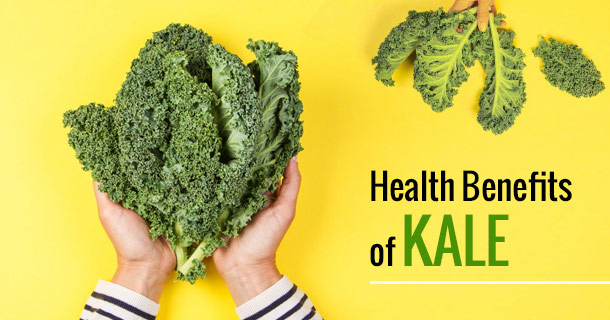Kale, a leafy green vegetable that is marginally bitter in flavor, is rich in Vitamin A, C, E, K, calcium, lutein, folic acid, and has tons of beta-carotene. Although, it is commonly eaten sauteed or in soups, many people are also consuming it as a dehydrated chip or as a part of the salad. Boiling kale is not suggested but microwaving, steaming, stir-frying, and eating it raw are all highly encouraged.
Raw kale is higher in nutrients than cooked kale, as some of the vital enzymes get destroyed and some nutrients get released when cooked. Hence, it is better to eat raw kale if you need the most nutrients and health benefits. Kale is becoming so popular not just for its taste but also for its nutritional benefits.

Kale is loaded with fibers and is packed with nutrient-rich photochemical and many health-promoting benefits. Kale has a great quantity of organic sulfur and as per scientists, it increases the body’s detoxifying enzymes which, in turn, protect the cell DNA. It helps in clearing out toxic substances from the body. When Kale is eaten, it accelerates the liver function to release enzymes that perform this detoxification of the blood.
Kale is low in cholesterol and saturated fat. It also helps to lower the risk of at least five different types of cancer. As per studies, consuming Kale has major cardiovascular benefits. The high fiber content of kale relates to bile acids in the liver to lower cholesterol levels. Kale is also effective in improving skin tone, averting colds, and enhancing energy levels.
Kale helps to prevent and fight against rheumatoid arthritis, cancer, emphysema, and cataracts. It is viewed as a superfood with several healing qualities. Apart from its nutritional values, kale is also frequently used for ornamentation and garnish. The most decorative cabbage you see in gardens is from the kale family.
This superfood is rich in vitamins and is perfect for soups, juices, smoothies, salads, etc. The traditional serving size of kale (1 cup) comprises just 40 – 60 calories making it a great weight loss support. Since kale is a member of the cabbage family, it is available in all seasons too. It comes in purple or green headless leaves. Other color variations may consist of whites, reds, and blues.
Kale is very simple to cultivate and is a terrific addition to any vegetable patch. It is fascinating to mention that the young and tender kale is best for salads while the mature leaves are finest for cooking. So, the next time, if you’re exploring for a great savoring and nutritious dish to attempt, give kale a shot, and feel all of the excellent health benefits this nutrient-rich vegetable has to present. Definitely, you won’t be repentant!

 October 11th, 2021
October 11th, 2021 Posted in
Posted in  Tags:
Tags: